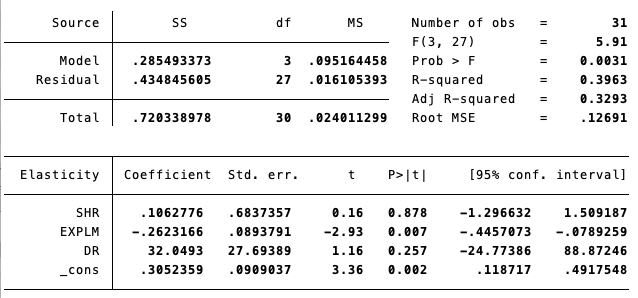Here're the results of a multi-variable regression analysis run by Stata to test the effects of the three factors on the price elasticity of supply, which is the dependent variable. The coefficients appear to be realistic and the "Prob>F" value seems acceptable. As this is an interdisplinary study and I don't have a solid statistical background, I would like to confirm whether this result can be considered as robust or if there're any obvious warnings that I may have missed.
If you require further context, please let me know, and I can provide additional information.
Edit: So I read in another thread that this could be due to the possibility that DR and SHR alone are not correlated, but they are when controlled by other factors. So I ran another regression dropping SHR just to test this; then I get the result as follows:
 You see here the F-test shows an even lower value, but the P-value for variable DR is still very high. What could be the explanation for it?
You see here the F-test shows an even lower value, but the P-value for variable DR is still very high. What could be the explanation for it?

